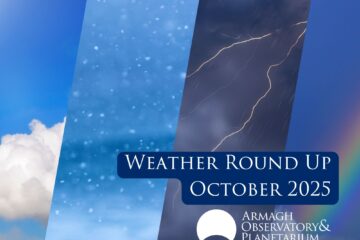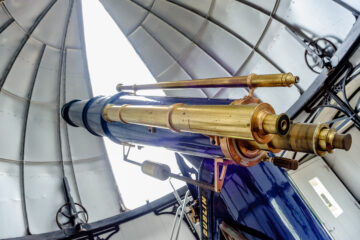One of our Astronomers, Dr Gavin Ramsay, reflects on his memories of some of the amazing telescopes he has travelled to throughout his career!
When the telescope was invented in early 17th century, they were generally used in the urban environment. Gradually they were housed in quite grand purpose-built buildings such as the Royal Greenwich or the Paris Observatory. Like Greenwich, Armagh Observatory was built on the top of a relatively low-lying hill which provided unobscured views of the entire sky.
One of the first scientists to attempt to place telescopes on mountain tops was the rather eccentric Astronomer Royal for Scotland Charles Piazzi Smyth. In 1856 Piazzi Smyth made an expedition to the island of Tenerife in the Canary Islands. He thought that the conditions for observing the stars would be better at high altitude where the air was more transparent and stable. Since then Telescopes have generally been built on remote mountain tops.
Until the age of jet travel, astronomers had to take the boat to get to the distant telescope. In the early 1950’s Armagh was a partner in the Armagh-Dunsink-Harvard Telescope in South Africa. Astronomers would take the Southampton to Cape Town ship which took several weeks to get there. Cape Town has an important role in the history of Astronomy with the Old Royal Observatory being a beautiful building and has a superb setting. In the 1970’s several telescopes in South Africa were moved to a remote location to the North East of Cape Town in the semi-desert Karoo.

This is where my first trip to an overseas Observatory was in 1990 whilst I was a student at St Andrews University. The world was entering a new era – the Berlin Wall was breached just a few months previously. Little did we know that Nelson Mandela would be released the day after we got back from the Observatory to Cape Town. As the photo shows the Telescope was physically quite large and certainly the biggest I had ever seen. It was also quite manual where getting the autoguider for the Telescope working meant going up a large stepladder and placing a star in the cross hairs. As I’m slightly colour blind, I couldn’t see the cross hairs since they were illuminated by a red light. When my supervisor tried to find this cross hair he was nearly blinded by the light!

One of the Observatories I’ve been most to is the island of La Palma in the Canaries. A series of Telescopes are built on the edge of the caldera which was formed when the volcano collapsed half a million years ago. My first visit took place in the days when it required 3 flight connections: London to Madrid – Madrid to Tenerife – Tenerife to La Palma. I ended up in Tenerife on time. I waited for the flight to show and waited. Half an hour to go and still nothing. I went to ask someone. Apparently my Madrid flight arrived in Tenerife South but the La Palma bound flight left from Tenerife North. Which was nearly an hours taxi ride away! Unfortunately, it was Christmas eve. I took a bus to Santa Cruz the main city on the island. I felt like Joseph searching for an inn for the night. I arrived on La Palma on Christmas day. I don’t remember what I was supposed to be observing!

The highest and perhaps best Observatory is Mauna Kea on the Big Island of Hawaii and the site to some of the world’s best telescopes. I was there only once to use the UK Infrared Telescope. At 4200m (13800ft) you certainly noticed the altitude and the brain seriously slows down. Going down stairs is fine but going up… Other dangers include snakes in Siding Spring in Australia and a plague of tiny frogs in Narrabri Australia. They were coming out from the toilet! And (in an Observatory I won’t name) in Arizona both the Telescope and Kitchen were over-run by mice. They were literally jumping over your feet and in and out of the bins – which brings me to food. If you are in an Observatory for a week or more (and I’ve probably spent 6 months of my life in La Palma) it is good to have decent food. It keeps the spirits and morale up. When the European Southern Observatory founded its site in La Silla in Chile in the late 60’s they brought with them a chef from Paris. My experience certainly has ESO amongst the best for food with Siding Spring in Australia providing excellent home cooking if I remember! I won’t mention the worst but I have spent a great deal of time there…

Until the last decade or so astronomers have needed to go to an Observatory to use a Telescope. Now many Telescopes are scheduled in a `queue’ and done by a support astronomer and many more are now robotic. This means they the observe patches of sky or targets according to various criteria and they start and proceed independently. Obviously ensuring the software does what is intended is not trivial to get right. Armagh is founder partner of the Gravitational-wave Optical Transient Observatory (GOTO) which is one such remote robotic telescope and sited in La Palma. Its key goal is to detect the optical counterpart of gravitational wave events detected by Ligo and Virgo.
Written by Dr. Gavin Ramsay



0 Comments